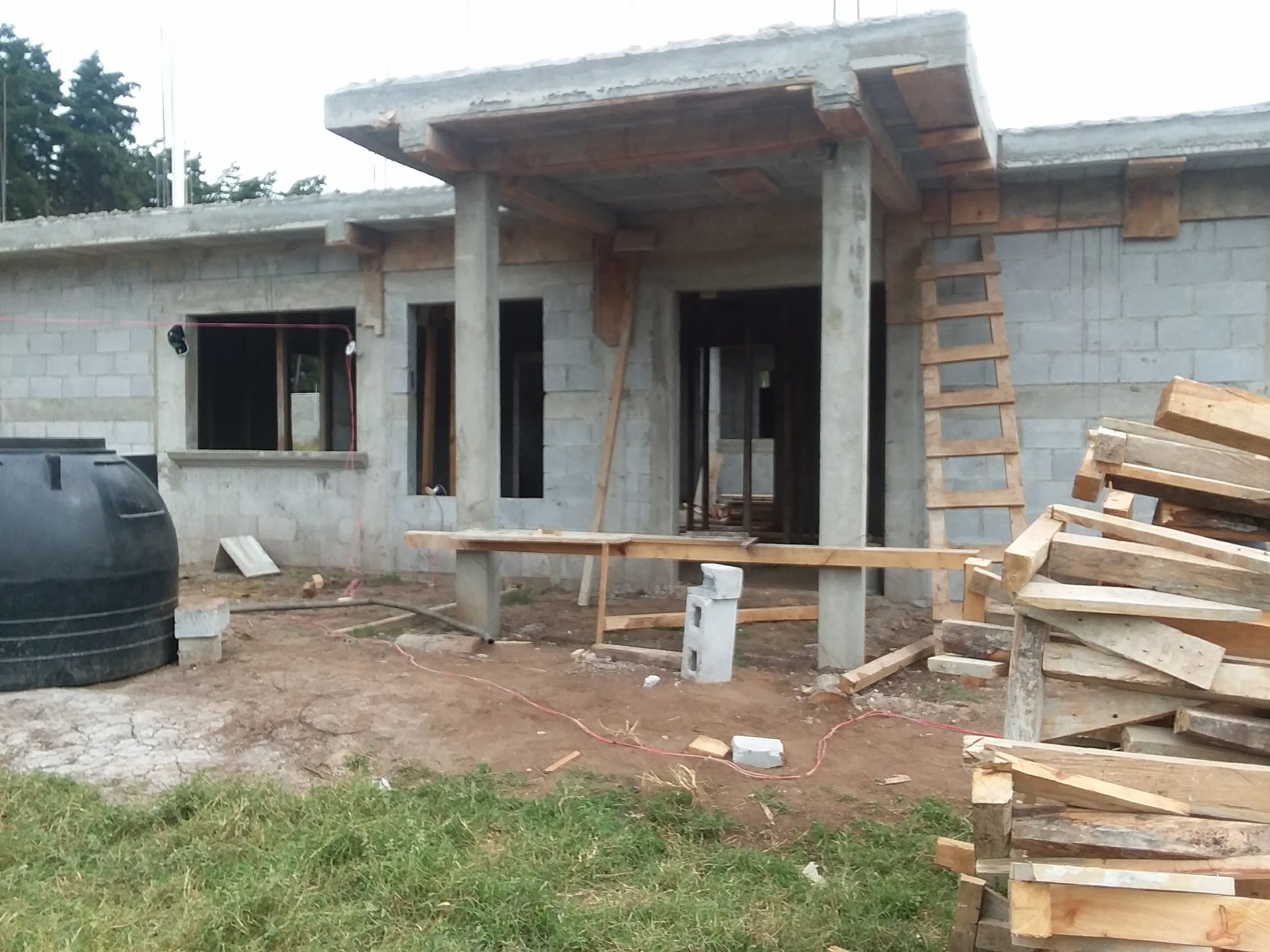Designing a Homestead
Happy New Year, everyone! We hope you had a relaxing holiday season with family and friends, just as we did. Another two months have flown by, and house construction has moved swiftly along at the property in Guatemala! The structure of the house is nearly complete, and electricity, water, and plumbing are currently being installed. We’ll be moving in before we know it. Take a look at the progress so far!























As we wait for the house to be finished, we have designed a preliminary layout for converting the property around the house into a thriving homestead. Our design incorporates the principles and processes used in Permaculture Design, in hopes of creating a mostly self-sufficient, self-sustaining space for the family to enjoy. It is centered around the idea of simulating and utilizing the features and patterns observed in natural ecosystems for the benefit of both humans and the local environment. It is applied using three key ethical principles: care for the Earth, care for people, and return your surplus to Earth and people.
The first step in designing a homestead ecosystem is to observe the landscape. We took some time each time we visited the property to walk around and observe every detail, such as the location of the sun in the sky, wind patterns, slopes along the ground, and where plants were most likely to grow. After several weeks of observations, we noted the “sectors” on the property. In permaculture design, sectors are elements and forces that enter the planned system which cannot be changed, but can be accounted for in the design. For example, one sector is the location of the winter/summer sun angles in a given location. As our property is on an open space that faces almost directly South, the sun passes across the entire landscape from East to West along the South end of the property. Guatemala’s proximity to the equator means that the angle of the sun does not change as drastically with the seasons as it would at a higher latitude. We accounted for the passing sun by designing and building the house to open to the South, so that the sun can warm the open center plaza during the day, and thus keep the thermal warmth trapped there at night. We will explain more of the sectors we accounted for in our design as we walk through it with you.
After observing the sectors of the property, we sat down to begin designing a layout for the property, centered on the house. We focused our design on “zones”, beginning at “zone 0”, which is the house itself, and moving outwards to “zone 5”, which is the wild tree line at the halfway point of the property. Closest to the house will be the “zone 1” areas, which require the most daily care and upkeep, such as the kitchen garden, compost pile, and greenhouses. There will be a “Zone 1.5”, which will be areas that require minimal daily care and more intense maintenance once every couple of weeks, such as the chicken coop, duck coop, and guinea coop. “Zone 2”, which will require daily observation and active care a few times a week, will include the hearty annuals and perennials, an herb spiral, and a pollinator garden. The areas that require less active upkeep fall into “Zone 3”, and will include the water/mulch garden, the orchard, the greywater pond, and the blackwater marsh. The plants that grow along the property lines will fall into “zone 4”, requiring only occasional pruning and minimal care.
Our initial design is as follows, but may go through some minor changes as we continue to observe the property and redesign based on our observations and any other information we learn as we work on the design:
Each zone has unique features and different functions for the homestead, with the overall goal of reducing waste and reusing materials as much as possible to create more resources that can be used for the benefit of all. In our upcoming posts we will look at each zone and explain how they work together to form a healthy homestead ecosystem!





